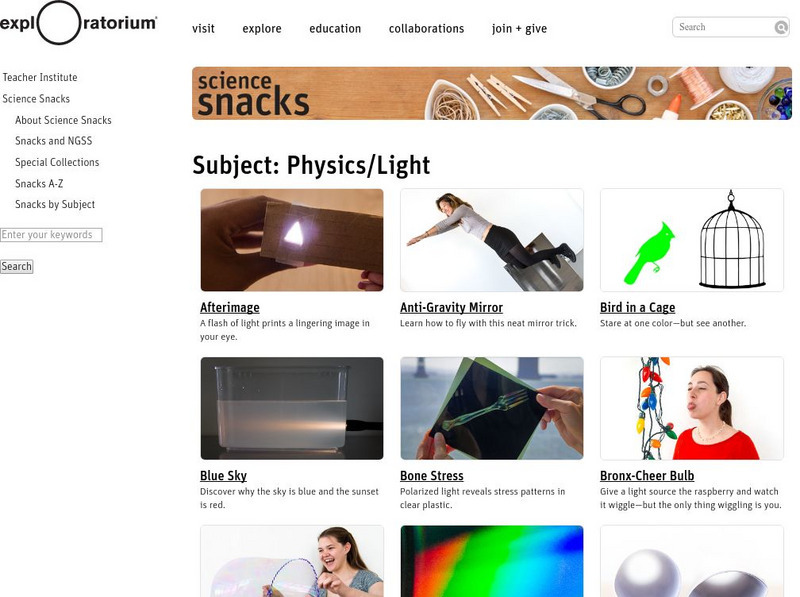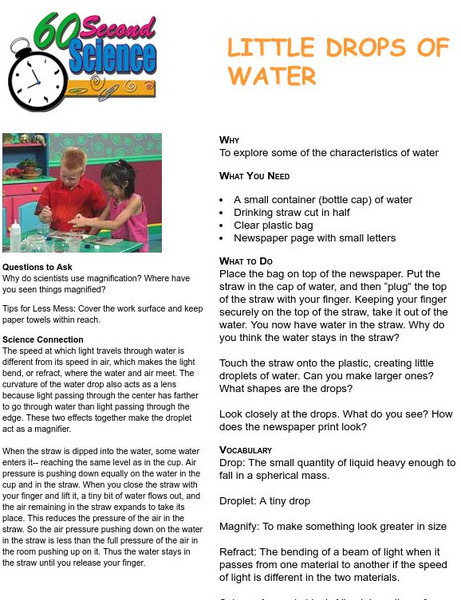National Nanotechnology Infrastructure Network
Understanding Wave Motion - Slinky vs. Snaky: Which Spring is Dominant?
Ride the wave to an understanding of refraction! The first in a series of two inquiry-based lessons challenges learners to create transverse waves with two different types of springs. As their wave hits an object, they observe the change...
Colorado State University
Why Is the Sky Purple?
The color of the sky depends on the time of day. Young scholars experiment with scattering different wavelengths of light to recreate the color of the sky. They observe both the longer blue wavelengths and the shorter red and orange...
National Nanotechnology Infrastructure Network
Jell-O® Waveguide and Power Loss
Jell-O® can help model the transmission of light through fiber optic cables. Young scientists use the jiggly dessert to make a waveguide to transmit a laser beam from one point to another. Their models help them learn the function...
Exploratorium
Exploratorium: Science Snacks: Physics/light
Here is a large collection of simple science class activities for understanding the physics of light.
Science Buddies
Science Buddies: Using a Laser to Measure the Speed of Light in Jello
Think it takes expensive, sophisticated equipment to measure the speed of light? Think again. Outfit yourself with a simple handheld laser pointer, a protractor, and Jell-O, and you're ready to get started.
Science Buddies
Science Buddies: Measuring Sugar Content of a Liquid With a Laser Pointer
Here's a project that shows you how to use a laser pointer and some knowledge of physics to figure out the concentration of sugar dissolved in a liquid.
Exploratorium
Exploratorium: Science Snacks: Disappearing Glass Rods
In this activity, you will make a glass object disappear by eliminating the reflection from and the refraction by the glass object.
Center of Science and Industry
Cosi Columbus: Bent Toward Science Refraction
Learn about refraction in this hands-on science experiment. Includes full list of materials, procedures, and scientific explanation of what happens when light moves from one material to another.
Other
60 Second Science: Little Drops of Water Experiment
Explore the properties of water and observe how drops of water can act as a magnifying lens.
Exploratorium
Exploratorium: Science Snacks: Convection Currents
Get a visual of convention currents with this activity. This activity allows students to observe the currents by bending light due to cold and warm water.
Optical Society
Optical Society of America: Optics for Kids: Watch Tv Upside Down
An experiment to invert a television image using a magnifying lens. Accompanied by an explanation of what's happening.









